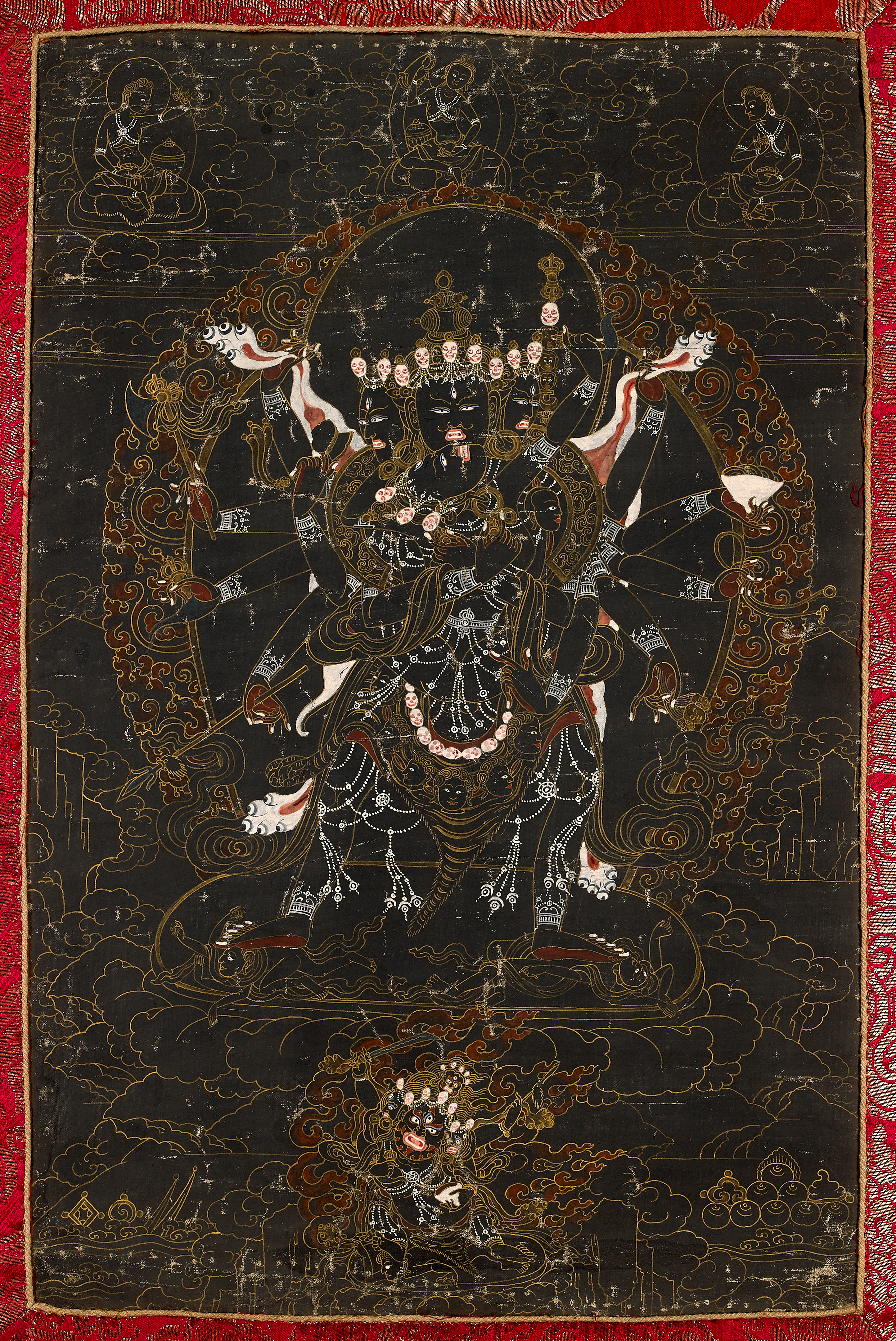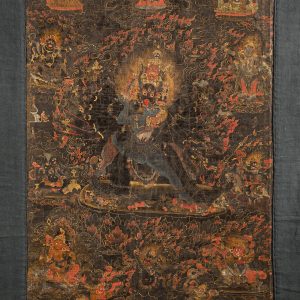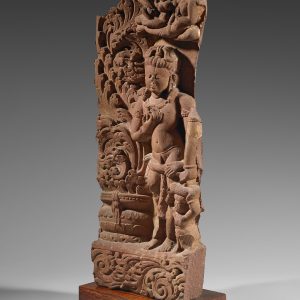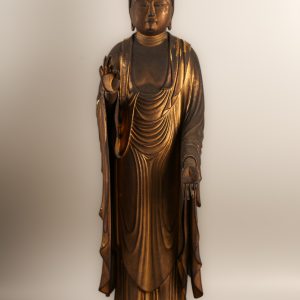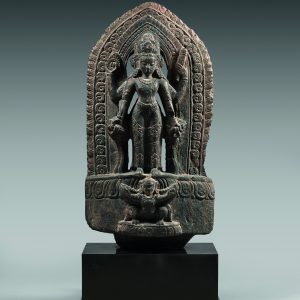The protective god Samvara in his Srichakra aspect
Tempera pigments on canvas
Tibet
19th century
H. 46 cm or 18 ⅛ in
Description
Esoteric Indo-Tibetan buddhism (Vajrayāna) assigns considerable importance to particular deities with a complex iconography, the personification of speculative treatises and rituals (ishta devata, literally “cherished divinity”).
The double god, Hevajra – Samvara, holds a special place in all Tibetan monastic schools. Here, Samvara (in Tibetan, bDe-mchog) is shown in his most common aspect, that of Srichakra.
The deity, whose skin is blue in some texts, has four faces, twelve arms and stands with legs spread and slightly towards the left. According to the Nispannayogavali, a Sanskrit treatise written by the monk Abhayakaragupta around 1100 C.E., the attributes held in his right hands are the vajra, the trident, the cleaver, the axe, the two-headed drum (damaru) and the elephant hide. In his left hands are the bell, the heads of the Hindu god Brahma, the rope, the skull cup filled with blood, the “tantric scepter” (khatvanga) and the other end of the elephant hide.
With his main hands, the god embraces the goddess Vajravārāhī (rDo-rje phag-mo) brandishing the vajra and holding the bell in his hand on the neck of his partner. In the Srichakra form, his left leg is lifted and wound around the thigh of the deity; the left leg remains straight along that of his partner.
Below the divine couple is Mahākāla (mGon-po), one of the eight guardians of the religion, in his Nag-po chen-po aspect, with four heads and four arms. At his side, various offerings and symbols of the five senses are presented in front of a mountainous landscape.
In the upper section are three “great adepts” (mahasiddhas), heterodox monks who wrote the esoteric treatises of Indo-Tibetan tradition. Among them we can recognize, from left to right, Birvapa (Virupa), his hand lifted to stop the sun, the eccentric holy man who cannot repay a debt before the end of the day. In the center of the composition, Damarupa brandishes the two-headed drum with its “striking balls”. Finally, on the right, that could be Krishnapa (?), often associated with the two other mystics.
The work is one of the black paintings (nag-thang), the most original and creative genres of Tibetan painting of the last two centuries. A few rare works of this type date back to the 17th century but their origin is probably even more ancient, transposing on portable scrolls the wall decorations of the dark chapels reserved for protective divinities. This procedure probably spread naturally, as it did here to other deities of fierce appearance. The painting belonged to a thang-ka group representing other protective gods (same sale, lots 87 and 88). In the best compositions of this type, the gods seem to spring out of the void, as in a vision obtained through tantric meditation. This effect is particularly well rendered here.
Provenance: Acquired in Kalimpong in the early 1970’s. Ariane Macdonald collection.

